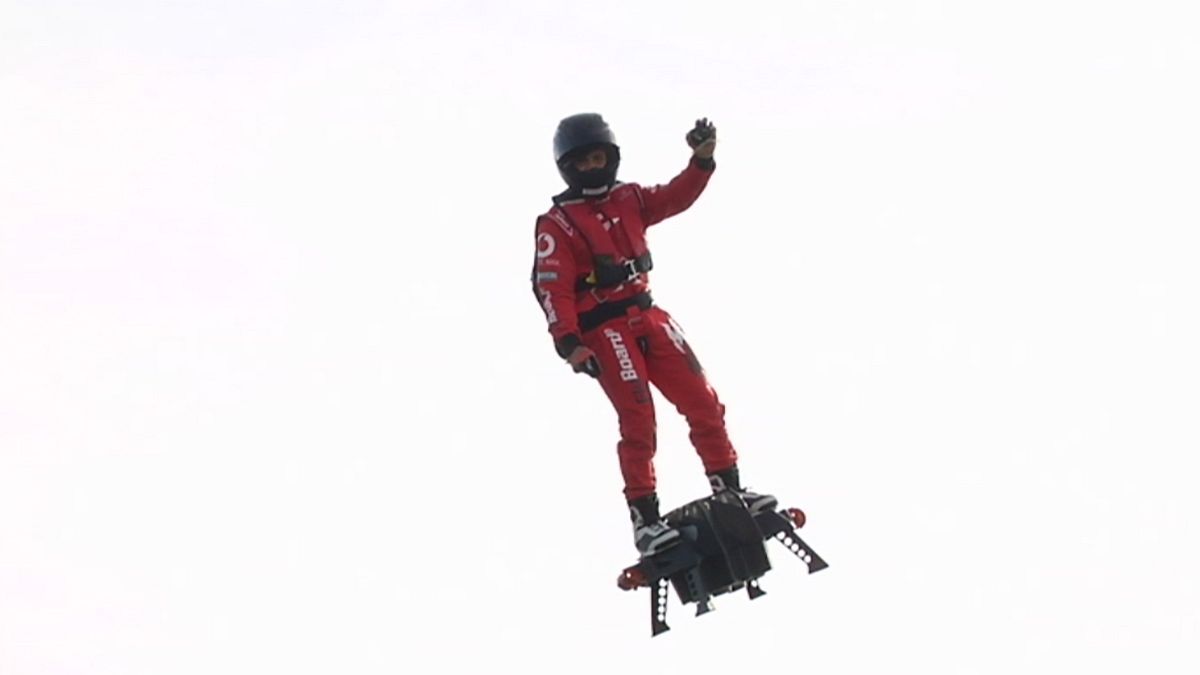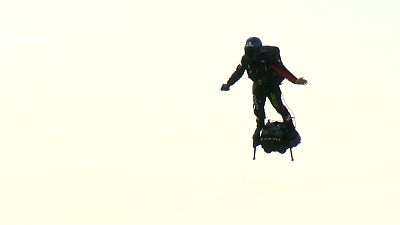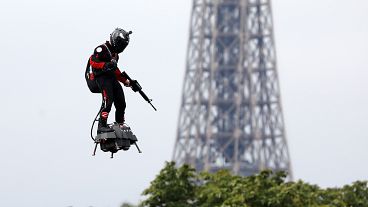When he released the video of his first test-flight on his Flyboard Air, former French jet ski champion Franky Zapata was initially accused of staging a hoax.
When he released the video of his first test-flight on his Flyboard Air, former French jet ski champion Franky Zapata was initially accused of staging a hoax.
It’s no surprise given the extraordinary look of his hoverboard.
On his new prototype, recently demoed over Barcelona’s Old Harbour, Zapata has replaced the water jets with jet turbine engines. He claims it’s able to fly up to 3,000 metres with speeds topping 150km/h, though those figures were not reached in Barcelona.
“By leaning my body to the front, or to the back, or to the left or the right, just by doing this, I control the direction. But also the stability. So it is a bit like: ‘If I’m going this way, I just have to move my body and to replace my centre of gravity’. The board’s thrust moves your gravity point. So if you move your legs like this, your gravity point is on the board. But if you are perfectly rigid, your gravity point is on your body, around your stomach. So just by moving the point you want, you adjust your gravity point. It looks hard, but it is actually what you do every day when you walk. It is something extremely intuitive,” explains Franky Zapata.
While the Flyboard Air has drawn some enthusiastic reviews, others have expressed safety concerns, saying that the failure of a jet engine or a miscalculation in fuel load could endanger the user.
Its makers say the device has an autonomy of 10 minutes and is heavily loaded with technical equipment.
“In my helmet I have a system that is above my eyes, that we programmed. We bought the system but is is an open source programme. It was programmed by my engineers, so I can see the time, the speed, the altitude. Also if something happens, I have one light and I know exactly if (the problem) is from the engine, or if the electronics are getting too hot,” says Zapata.
Each Flyboard is equipped with four 250-horsepower turboengines, fueled by kerosene carried in a tank strapped to the rider’s back. The rider uses a hand remote to control the engines’ throttle.
“Once reliability tests are done, this machine could be helpful for many things, like maintenance, safety operations, in the Army, these kinds of things. Then, to make this device available to everybody in the world, the way it is today, is impossible. In a few months it could maybe be possible in certain conditions, with high level people, like mechanical experts for example,” says Zapata.
The device recently won him a Guinness World Record for the farthest flight by hoverboard. He was credited with covering a distance of some 2,200 meters with an average speed of between 50 and 60 km/h.
But it won’t be seen on the market anytime soon, though, pending legal approval and many more test flights to ensure it is safe for users
You can see the flight onboard the hoverboard from the user’s point of view here:



